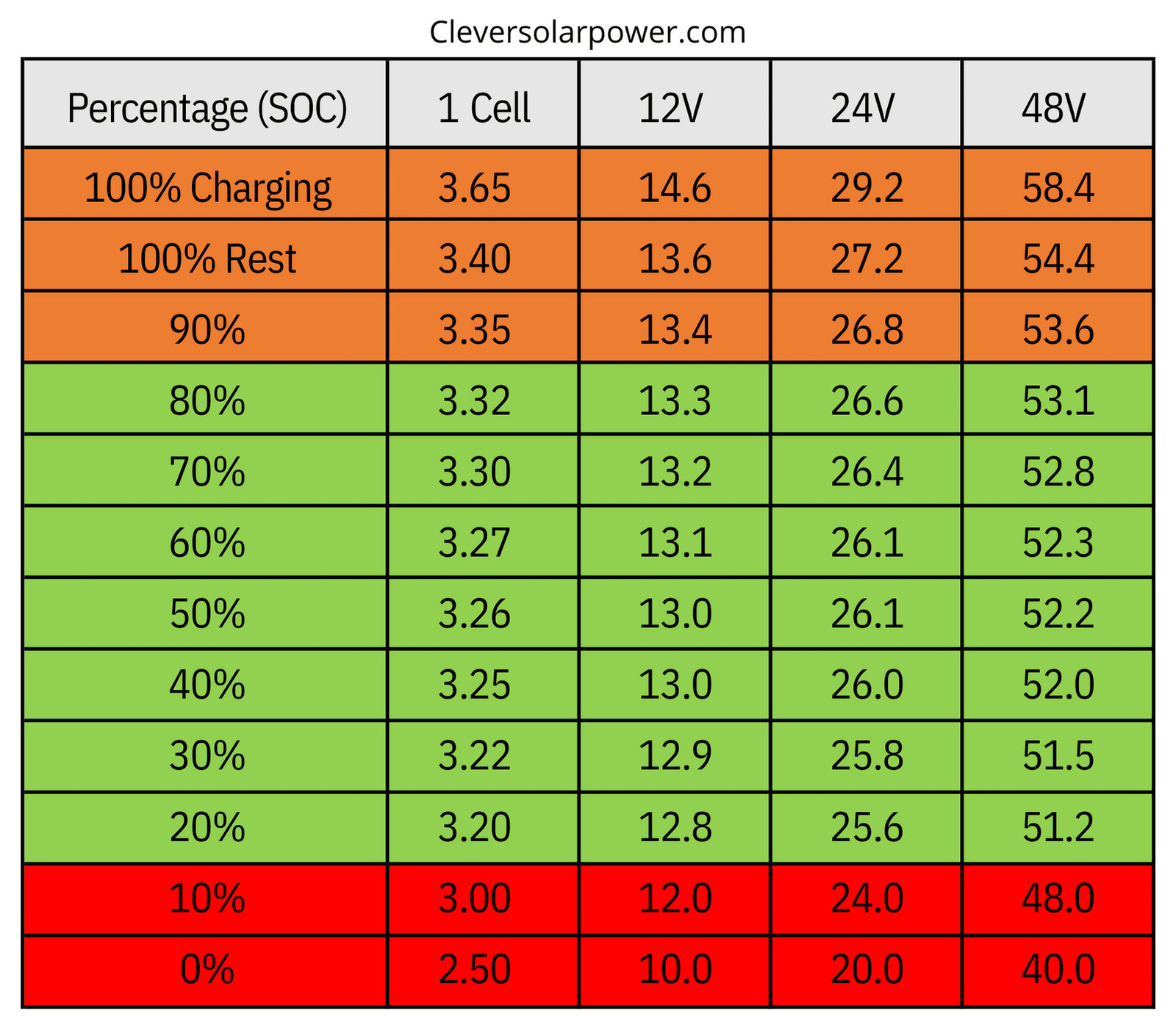Lithium iron phosphate batteries, or LiFePO4 for short, will need a special battery charger to charge efficiently.
However, if you are in a hurry and have a lead-acid charger available, you can use it too.
Why?
If we take a look at the charging voltage of a GEL or AGM lead-acid battery charger, we can see that the voltage range is suited for a LiFePO4 battery.
Most lead-acid chargers have a charging voltage of 14.4 to 14.7V.
While LiFePO4 is fully charged at 14.6V and then drops back down to 13.6V after being charged.
Here is a voltage chart of a LiFePO4 battery:

We can see that the charging voltage of a lead-acid charger (14.4V to 14.6V) is similar to the one of LiFePO4.
Ensure the voltages of your lead-acid charger are within the specifications of the LiFePO4 battery.
What happens if the charging voltage is too high?
If the charging voltage of the lead-acid charger is too high, the BMS of the Lithium battery will stop charging.
If one or more cells reach a high enough voltage level (3.65V or higher), the BMS will turn off the charging to ensure the battery is not damaged. These voltage values can vary by manufacturer.
Will the battery be efficiently charged with a lead acid charger?
Unfortunately, that is not the case.
Lead-acid batteries have a three-stage charging cycle. LiFePO4, on the other hand, only uses the first stage, which is bulk.
It will take longer for a lead-acid charger to charge a lithium battery than a LiFePO4 battery charger.
Conclusion
Can I charge a LiFePO4 battery with a normal charger?
Yes, you can. However, make sure the voltages or the lead-acid charger are within the charging voltages shown in this article.

I’m an off-grid enthusiast. I created this website to give clear and straight-to-the-point advice about solar power. I’m also the author of the book ‘Off-grid solar power simplified‘. Read more about me on my about page, check out my Youtube channel, or send me a message.
